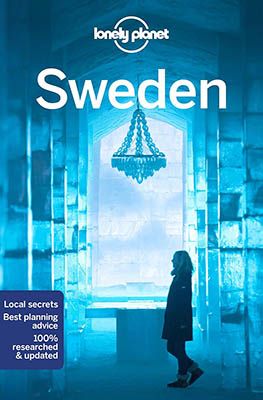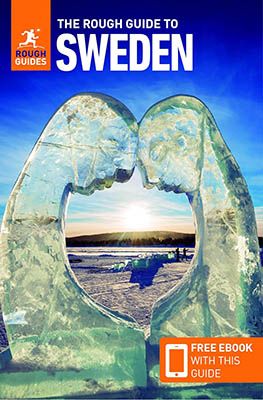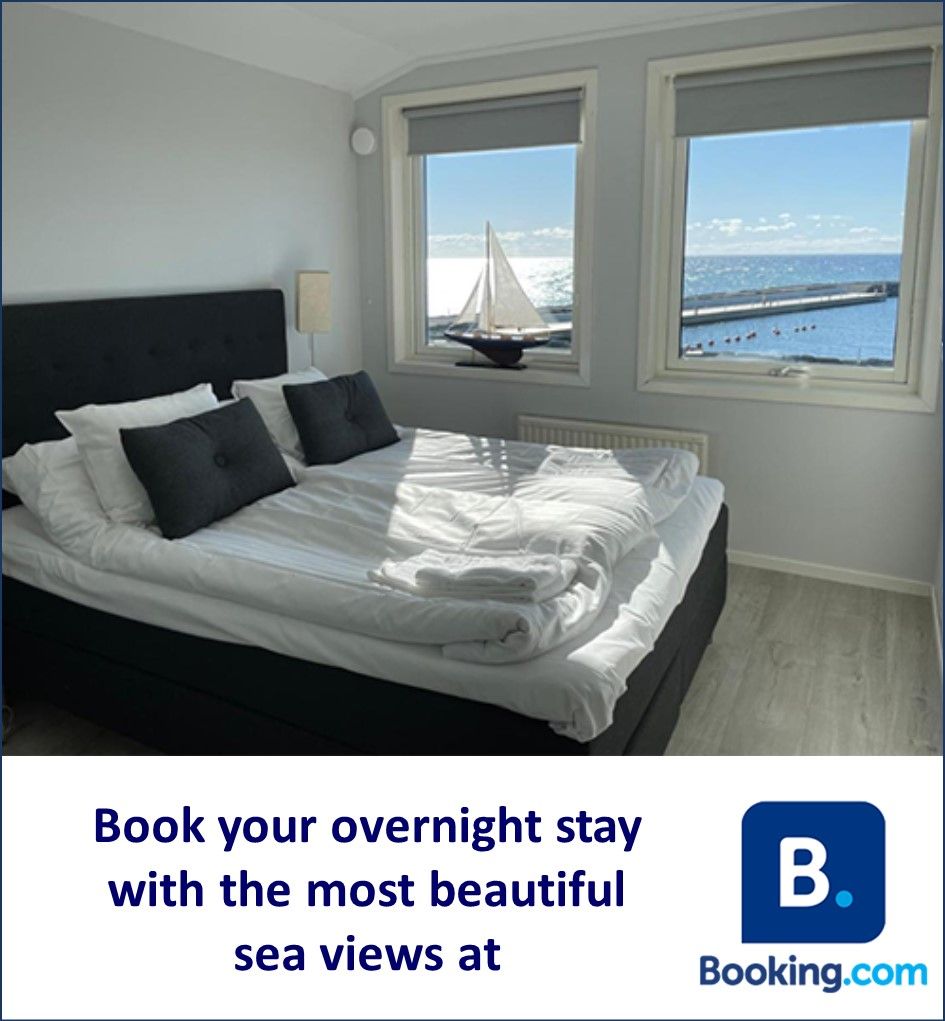Not far from Sweden’s south-east coast lies the extraordinary island of Öland. The island’s landscape is unique for its many nature parks, old fishing villages, ancient castles and fortresses. And the many windmills. Part of the island is even on UNESCO’s World Heritage List due to its great scenic value. Sweden’s royal family spends summers on this island and they do so for a reason. Because Öland is an island where you can have an excellent time for a long time. We saw every corner of the island and were impressed by Öland’s many highlights.
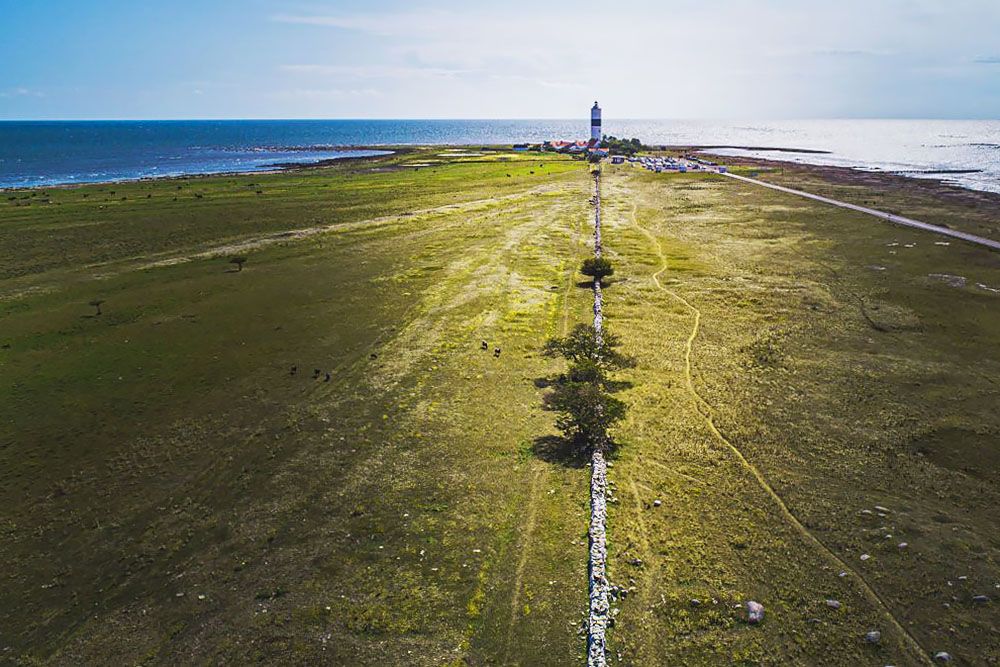
Sights along the coast to Öland
The island of Öland is our first major stop on our tour of Sweden. Via the Öresund Bridge from Copenhagen, we enter the country at Malmö. We decide not to drive directly to Öland. We choose to explore the south and south-east coast via a coastal route. That route has a few notable sights.
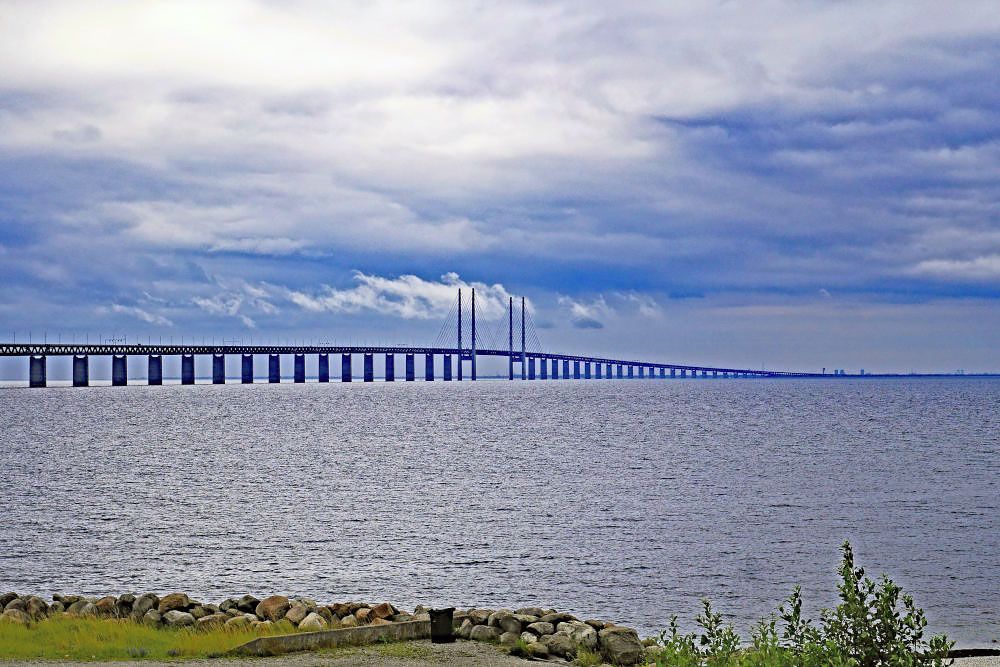
Smygehuk, Sweden’s southernmost point
We visit Smygehuk, a small fishing village near Trelleborg. This place is located at the southernmost point of Sweden. Special to stop and walk around the village, the nearby lighthouse and the surrounding landscape. There we encounter, among other things, an old lime kiln. The former warehouse a little further on has now been transformed into a nice art gallery and shop.
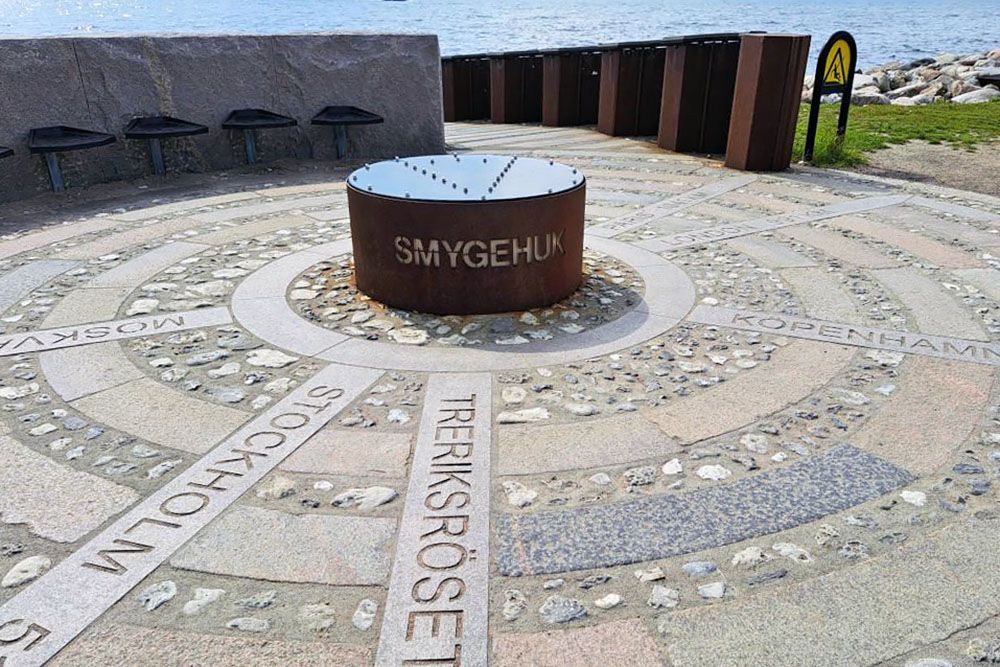
Ales Stenar, Sweden’s Stonehenge
Near the town of Kåseberga, we find one of Sweden’s most extraordinary sights. It reminds us of Stonehenge, but slightly different. On the hill, there are 59 large boulders in the field, neatly arranged in an elliptical shape. In between, cows graze peacefully, not wondering about the significance of Ales Stenar, as the monument is called.
Scholars do not yet agree on that either. Some think it was a large burial monument. Others think it is an astronomical clock. Whatever it may have been, it is a special place to visit. It is one of the largest Viking monuments in the country.
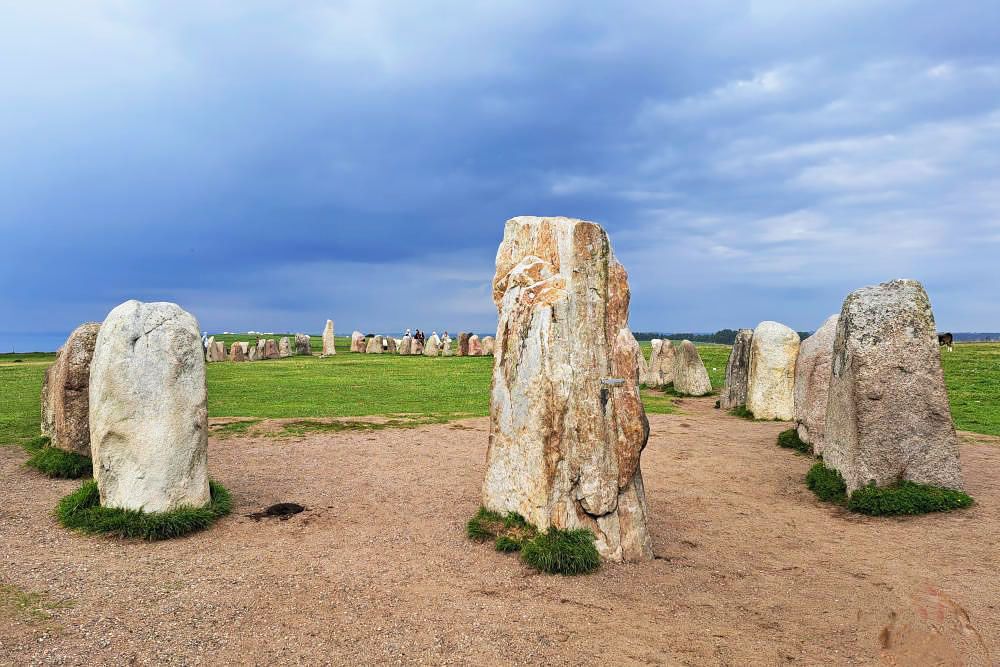
From the bridge at Kalmar to Öland
The city of Kalmar is the gateway to the island. It is one of the country’s oldest cities. And it played a major role in Sweden’s history. For instance, the Union of Kalmar was signed in 1397. It united the three Scandinavian kingdoms of Denmark, Norway and Sweden under one monarch. The signing took place in Kalmar’s imposing castle. We decide to visit Kalmar on the day we leave Öland. A decision we later regret….
Via the six-kilometre-long Ölandsbron, a modern bridge with four lanes, we reach our destination in no time. The exploration of Öland can begin!
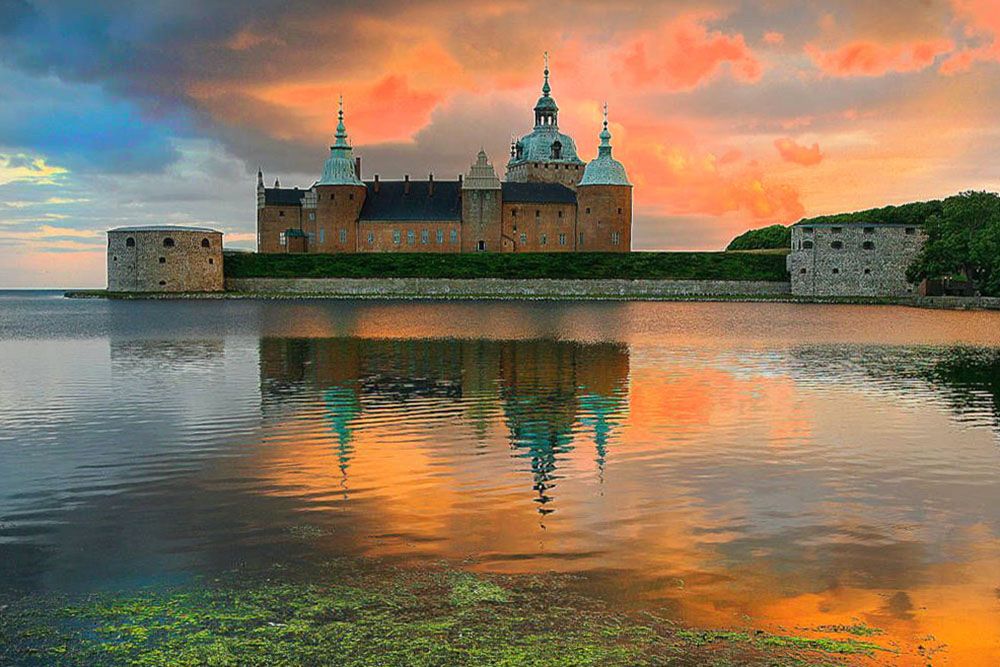
Things to do and see in Öland
Whether you’re a hiker or cyclist, nature or beach lover, interested in culture and history, the island is the place to be. We would have preferred to stay a bit longer, because there is plenty to see and do!
Borgholms Slott
One of the most beautiful castle ruins in all of Scandinavia is Borgholms Slott. This castle is more than 800 years old. Over the centuries, it changed from a strategic defensive fortress to a baroque palace of King Karl X Gustav. In 1807, a major fire broke out in the castle. As a result, it became an abandoned ruin. Thanks to many renovations, we can now enjoy the castle’s grandeur again. The exhibitions on the ground floor of the castle are fascinating. Some are permanent, others alternate regularly. Wonderful is also the view of the surrounding area from the higher floors. We look out over the bay and see Borgholm harbour.
There are several walking paths around the castle. Definitely interesting to take a diversion, as you will encounter various sights in a beautiful landscape along the way. These include a church and the village where the castle’s workmen lived in the Middle Ages. The summer residence of the current royal family is also on the route. This Solliden Palace is open from May to September.
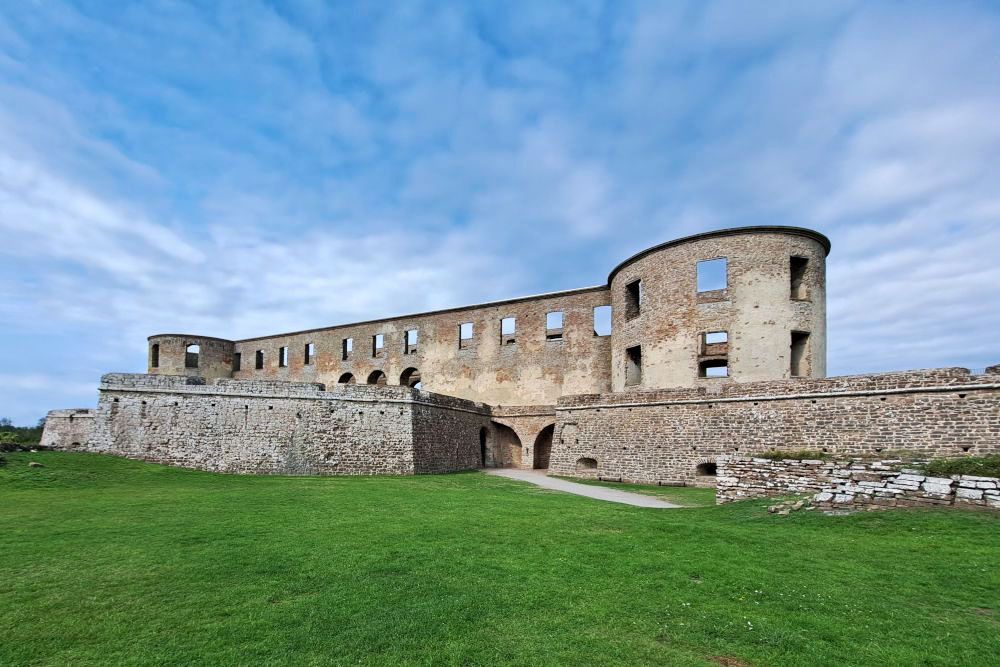
Borgholm
From the castle, it is a short walk to the centre of Borgholm. This capital of Öland was an important bathing and spa town a century ago. The fine mansions along its shores recall a bygone era. Swedish guests came by steamships from Stockholm for the healthy Öland air.
The centre of Borgholm is surprisingly uncluttered with a rectangular street pattern. It is a nice little town to stroll through. There are nice coffee houses that are an ideal place to have a fika (coffee with a sweet treat).
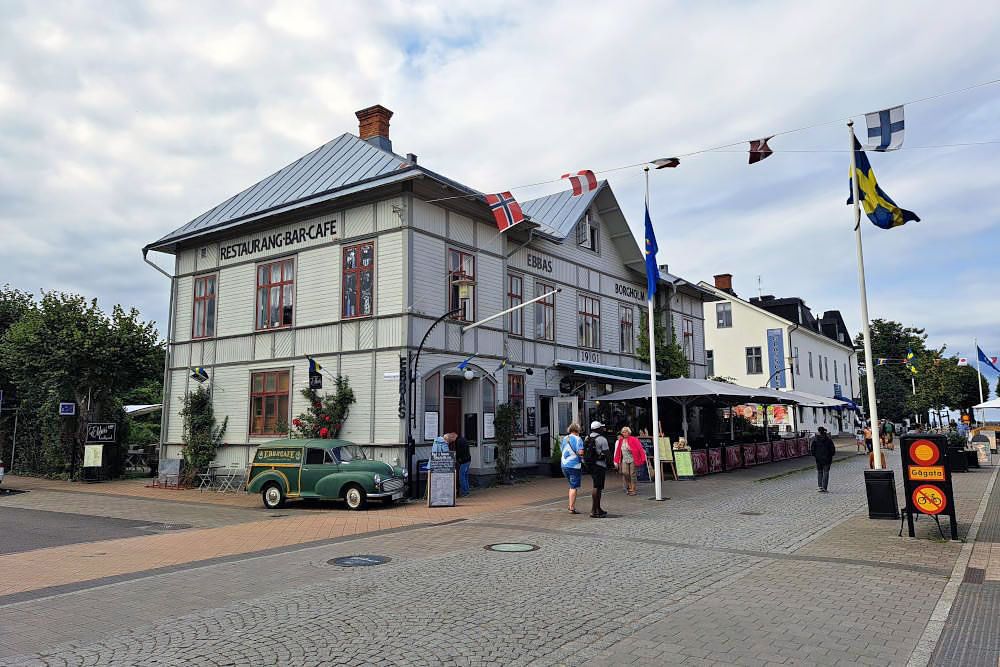
Visiting Långe Erik and Långe Jan
At the northern tip of the island, Långe Erik lighthouse towers above the surrounding area. Although there has been a lighthouse at this spot for some time, Långe Erik dates back to 1844. We are lucky, it is possible to climb the lighthouse. In fact, this is only possible at a few times during the summer. From the top, we look out over the wide surroundings.
For instance, we can see the Trollskogen nature reserve. An ancient forest with pines and oaks. In the forest stands “Trolleken”, an oak tree that is more than 900 years old. Not far from us as the crow flies, but an inlet from the sea makes a walk there take too much time. So, we walk around the lighthouse on the headland. Nice too!
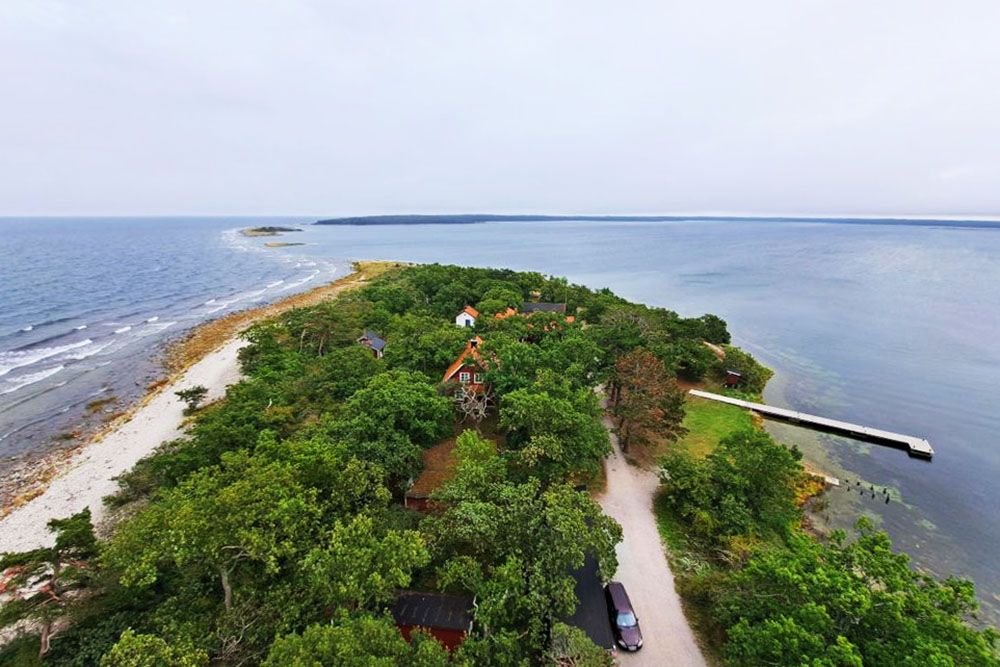
The southern lighthouse is Långe Jan. At 42 metres, this lighthouse is Sweden’s tallest. Since 1785, the tower’s light has been a beacon for ships. This also makes it one of the oldest working lighthouses in the country. After just under 200 steps, we are at the top. There, the view over the nature reserve and the sea is phenomenal.
Near the lighthouse is a small information point of Naturum, the Swedish Nature Monuments. There is also a bird-watching station. Walking through the nature reserve is pleasant. Besides vast coastal meadows, you will find several coniferous forests. Along the coastline, you might encounter seals. You are guaranteed to spot birds in this area.
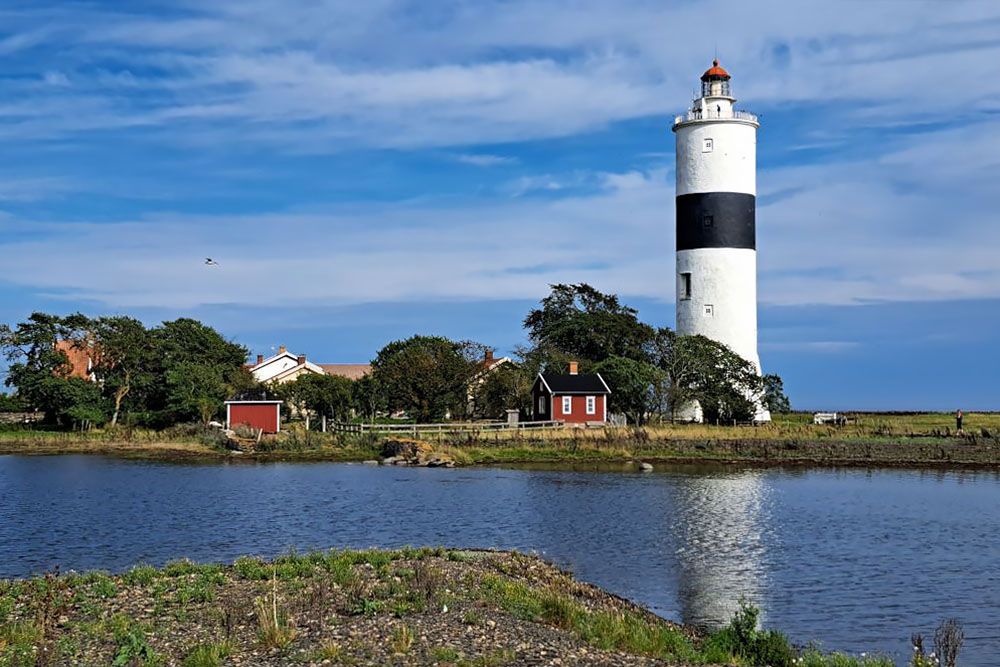
Windmills
There are many windmills on Öland. On the almost flat island, windmills were important and effective in earlier times. In the 19th century, more than 2,000 windmills graced the landscape. Now some 350 remain, scattered across the island. None are in function anymore. Yet they are still iconic to Öland.
Some mills stand alone in the landscape. For instance, we discovered by chance that there was one right next to our cottage. In several places, you’ll find three mills in a row. Near the village of Lerkaka, you will even find five beautiful windmills in a row.
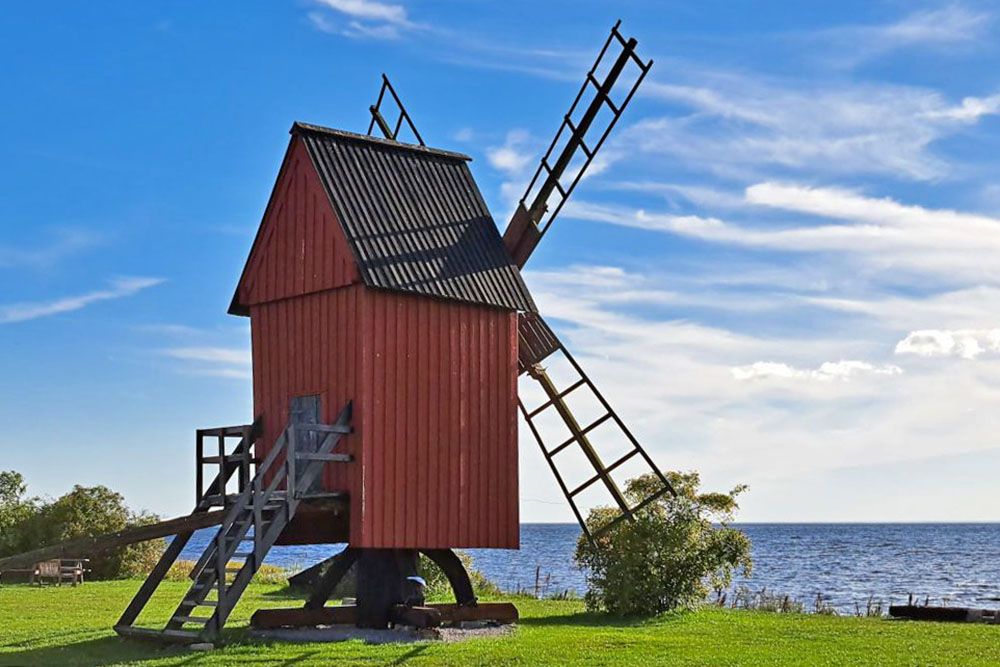
Kustvägen coastal route
From the tourist office we got the golden tip to drive the coastal route to the north, the Kustvägen, The road winds along the so-called stone coast through all kinds of traditional fishing villages. The route first goes on a tarmac road, but later on a well-travelled gravel road. It gives you plenty of time to look around calmly, as driving fast is not possible. And there is little other traffic on the route.
Along the route are old quarries. They are no longer in use, but used to be very important for Oland. In good weather, you have a great view of the Strait of Kalmar, the strait that separates Oland from the mainland. Unfortunately, we are not lucky today: a fog is moving in from the sea. This hinders our view, but also provides mystical images. For instance, a characteristic windmill emerges from the mist, a beautiful sight.
Sandvik is a nice former fishing village. Near the harbour is one of the largest windmills in the world. The small fishing huts of Jordhamn with Sweden’s only barn mill (used to clean lime slabs). Alvedsjö Bodar also has several cute wooden fishing huts with thatched roofs. The village became the summer residence for many artists and writers in the 20th century. Our coastal route ends at Byrum. There we encounter beautiful rock formations. A little further on is a beautiful sandy beach. It is crowded as the sun shines there in abundance. Many people want to enjoy another day at the beach. We end our beautiful coastal route full of sights at this spot.
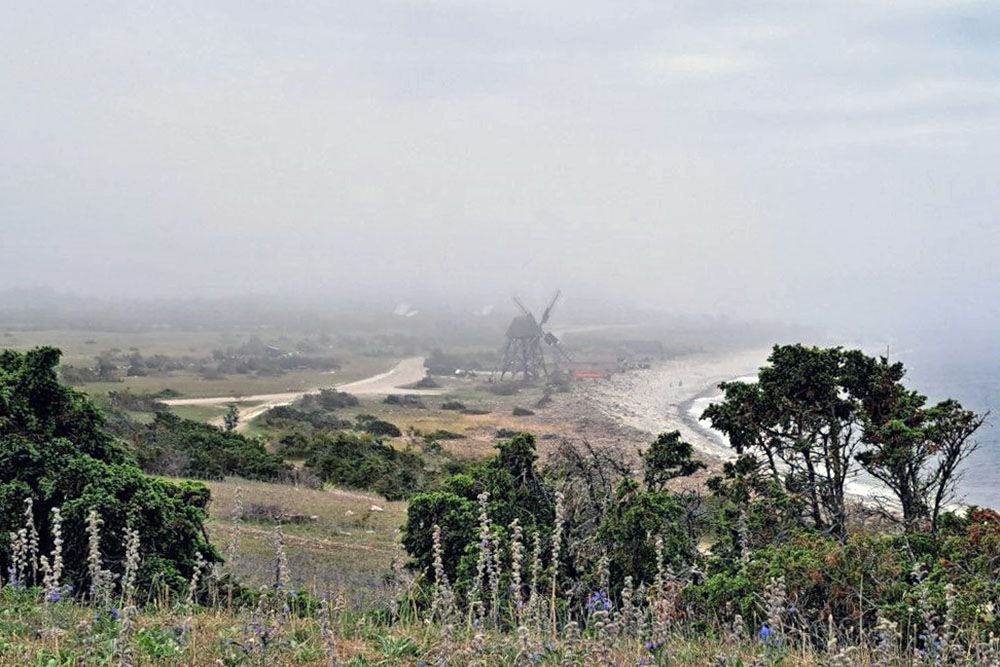
Eketorps Borg
In the south of Öland is a ring-shaped fortress, Eketorps borg. The fortress was built in the Iron Age and rebuilt and expanded until the Middle Ages. For centuries, the fortress was well hidden underground. In the 1970s it was excavated and rebuilt. Now it is a large open-air museum. Fun to visit, though you’ll have seen it in an hour.
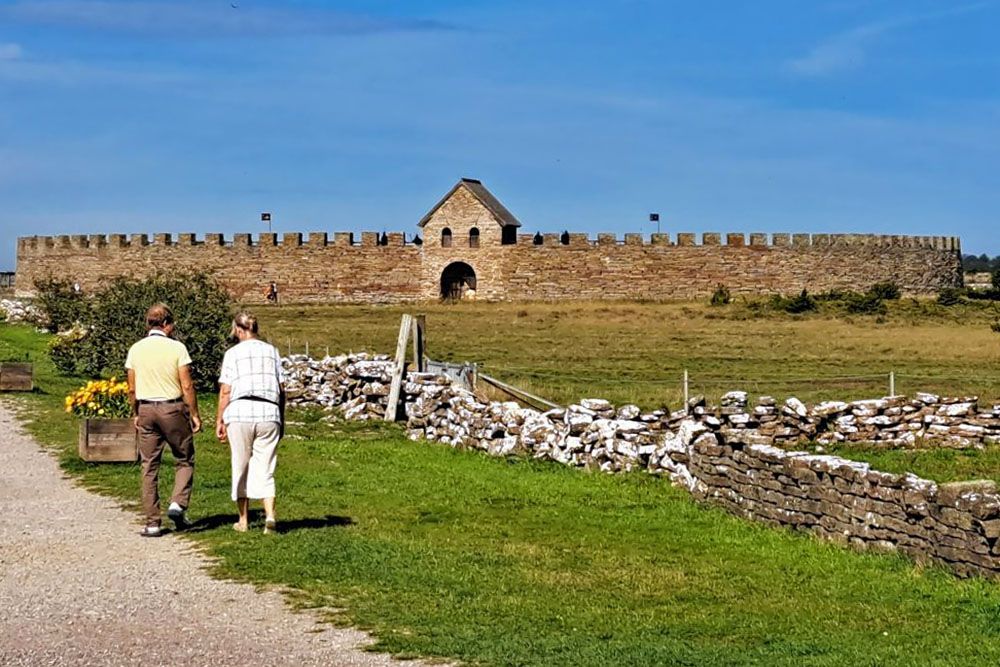
Beaches
If you want to enjoy a beach walk, the beaches north of the town of Boda are ideal. For kilometres, you walk on fine sandy beaches. On our beach walk, there were hardly any other walkers or bathers. During the Swedish high season, which starts at the end of June, it will undoubtedly be busier. After all, these beaches are very popular with many holidaymakers.
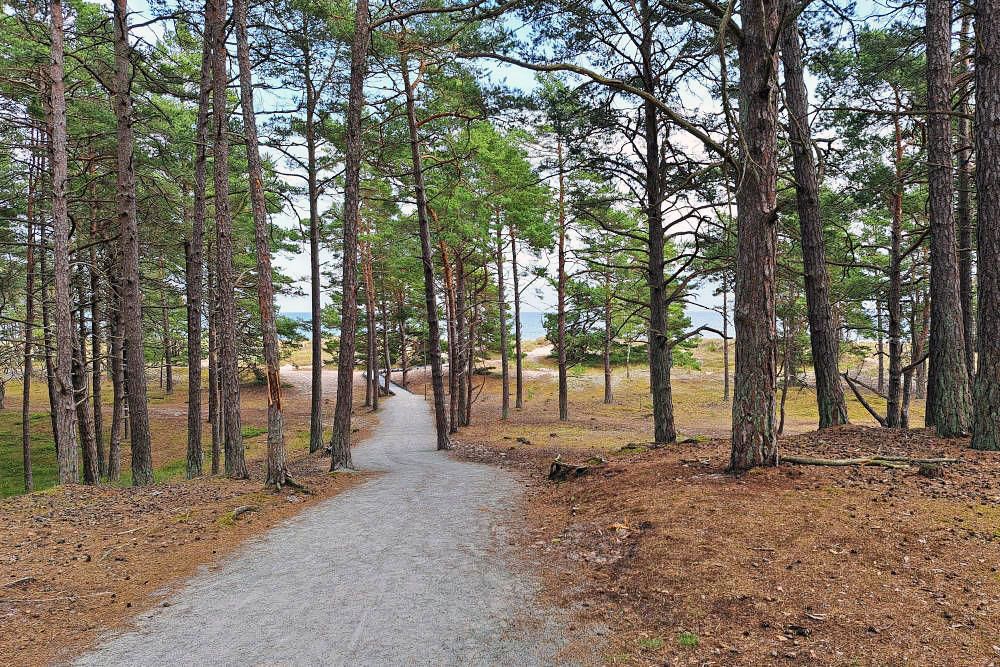
Hiking on Öland
On Öland, you can take several beautiful hiking routes. From a short walk of a few kilometres to a multi-day trip, everything is possible. The most special hiking area is the Stora Alvaret area, a special plateau in the south of the island. You imagine yourself in an African steppe scape there. You won’t see any trees, but bare limestone terraces (the Swedish word ‘alvar’ means limestone). This is the largest alvar area in Europe. It is a UNESCO World Heritage Site due to its unique wildlife and scenic value.
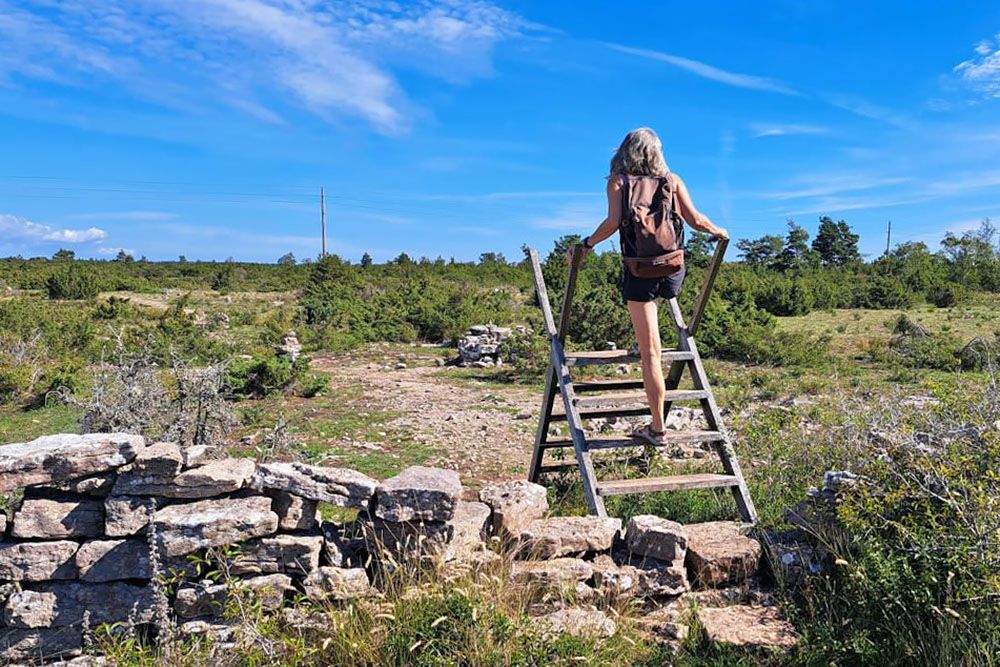
We take a short walk in this area. The rough ground is unworkable and barren. Only low vegetation can survive there. Juniper bushes, rare orchids and the Ölands sunflower create a special vegetation. Our short circular walk gives us an excellent impression of a special steppe landscape. After this round trip of just under seven kilometres, we add another short hike. This one takes us to two upright stones, far apart from each other. In the desolate landscape, they form a mystical vertical beacon. These Tingstad are probably places where family heads met long ago. We then walk the same route back to the car park.
The Öland Tourist Board website has many more walks on Öland.
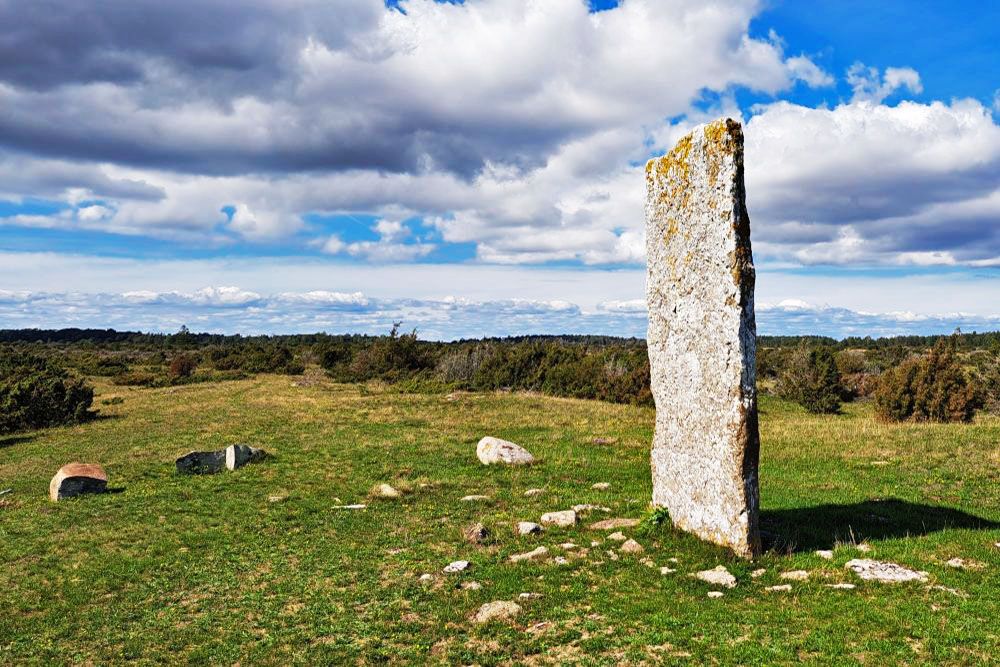
Biking on Öland
Öland is a virtually flat island. This makes it a great destination to explore by bike. One idea for a cycling holiday is to cycle the Ölandsleden. This cycling tour goes all over the island. All the sights we have described are on the route. In addition, you will discover many more beautiful villages and landscapes.
The Ölandsleden is about 370 kilometres long in total. The route runs mainly on asphalt roads and the occasional gravel road. Yellow signs show you the way. On the large map of Öland (available at tourist offices and accommodation providers), the route is marked in blue.
Of course, you can also cycle a section or map out your own route. Cycling on the road is no problem. The few motorists take good account of cyclists. The tourist office’s website lists several great cycling routes on Öland.
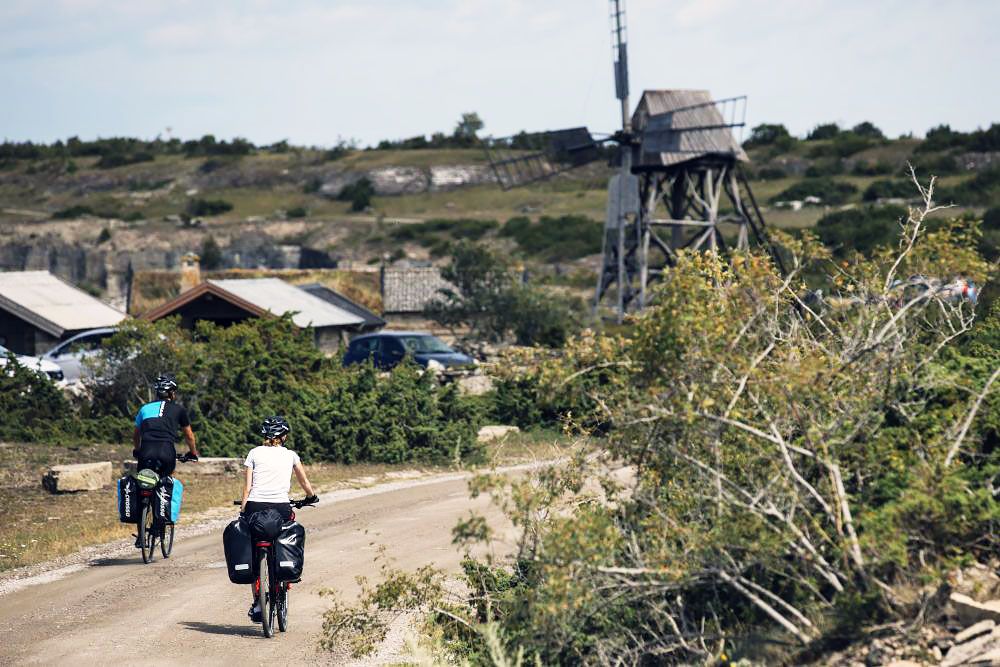
A little disappointment in conclusion
On our penultimate day on Öland, the landlady informed us that we would have to drive back via a different route the next morning. That day, the Iron Man was taking place. The cyclists passed our way, so our car had to be somewhere else. In passing, she added that Kalmar, where the start and finish was, was completely sealed off. So much for our visit to the old town and castle. If only we had gone to Kalmar the day we arrived! A minor bummer, but our days on Öland were fantastic!
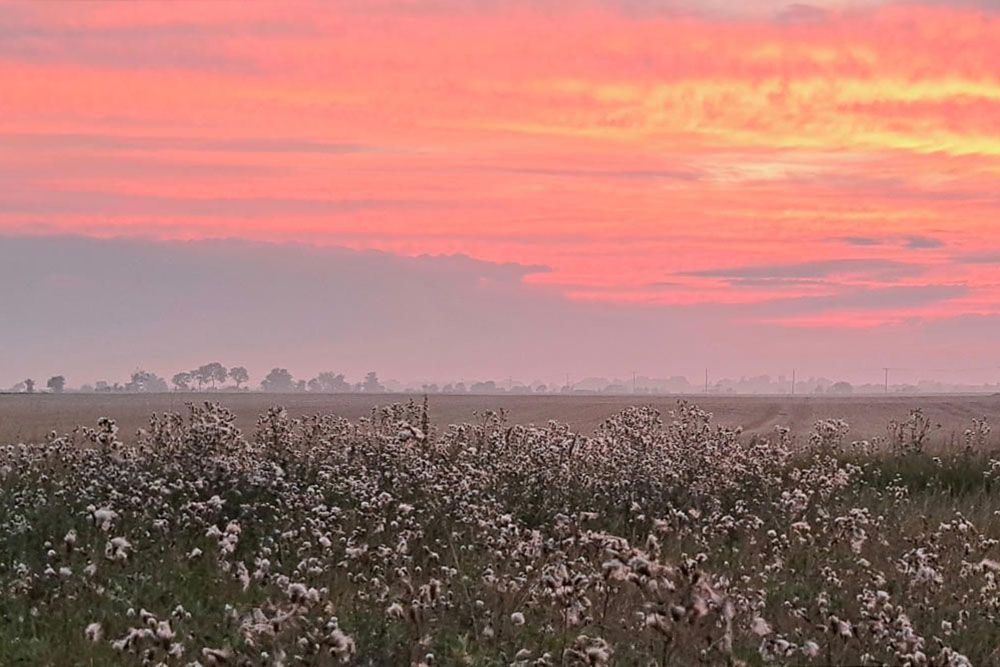
Frequently asked questions about the island of Öland
The island of Öland is situated in south-eastern Sweden, in the region of Småland. It lies about six kilometres from the mainland in the Baltic Sea. The nearest place on the mainland is Kalmar.
From Kalmar, a wide four-lane bridge, the Ölandsbrug, gets you to the island quickly. The bridge is toll-free. From Malmö, it's a 300-kilometre drive if you go direct. If, like us, you take the southern coastal route, the route is a lot longer, but very interesting and full of sights.
From Stockholm, it's over five hours to Öland. If you're coming from Gothenburg, count on a drive of about 4.5 hours.
Öland is ideal for exploring with your own car or motorhome. When travelling to Sweden, you can easily catch the Scandlines ferry. It departs from Puttgarden in northern Germany. You will arrive in Rodby, Denmark. From there you can drive via Copenhagen and the Öresund Bridge to Malmö in Sweden.
With a total length of 137 kilometres from north to south, and a maximum width of 16 kilometres, Öland is Sweden's second-largest island. About 26,000 inhabitants live on the island. In the summer months, more people stay on the island. For it is a popular holiday destination. Sweden's largest island is Gotland. It lies northeast of Öland, also in the Baltic Sea.
There are many interesting cultural and historical sites on Öland. Such as Borgholm Slott, the royal summer palace Solliden, the many windmills, Eketops Borg, the two striking lighthouses on the north and south points of the island and the old fishing villages along the west coast.
There are many different walks available in Öland. Especially in the southern part of the island, you will find beautiful walks in a UNESCO World Heritage-listed landscape. On the website Naturkartan, you can find many walks on southern Öland.
Especially in Borgholm, you will find many excellent restaurants. These are the five best rated in the island's capital:
In the southern part of the island, you have plenty of good restaurants to choose from in the area around Morbylanga. These are the best five:
- Robertos Restaurang & Pizzeria
- Seasalt Kitchen
- Eco by StrandNära
- Stenhusa Krog - Broderna Hallden
- Galleri Bla Porten
This is the overview of all restaurants on Öland.
We stayed in a detached cottage in Risinge, just south of the town of Mörbylånga. A fine accommodation with a sitting area, a kitchen, bathroom and a nice garden where we enjoyed beautiful sunsets. For the sleeping area, we had to go up a steep staircase. As it was below the ridge, we could only stand upright in the middle. Those stairs, a toilet downstairs and little room to move around upstairs were some drawbacks. But all in all, it was a pretty good accommodation for us.
Other accommodation on Öland:
This is an overview of all the accommodation on Öland.

